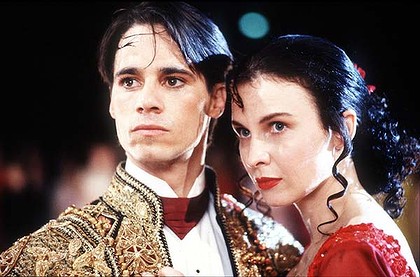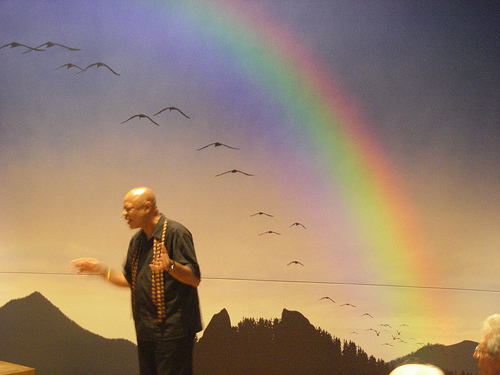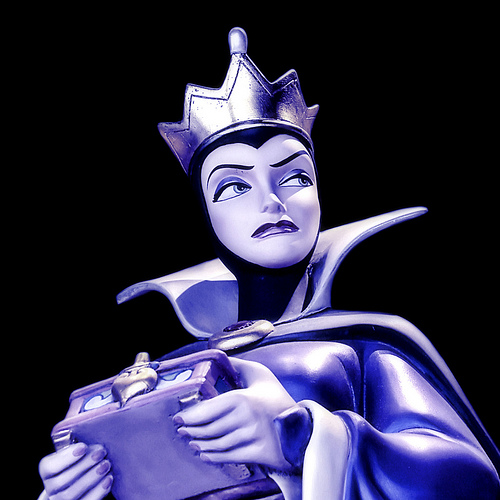Hacking Your Reader’s Brain
Today’s guest post is by Jeff Gerke, award-winning author, former book publisher, and writing instructor. I heard Jeff give a talk on this topic and was enthralled. Be prepared to learn something that will blow you away—the truth about reader engagement. His topic ties in wonderfully with what our editors have been examining all month—Fatal Flaw #7: Lack of Pacing and Tension. Jeff provides a whole other way of understanding why our fiction often lacks these crucial elements.
What makes a novel a best seller? What makes it something readers careen through, staying up until three in the morning to finish? What causes readers to tell all their friends they have to read a given novel?
Now, I would wish the answer to be “excellent fiction craftsmanship.” I would like to report that the secret to a novel’s success is the hard work and disciplined training of the writer. Converting telling to showing, keeping that point of view consistent, replacing all those flabby “to be” verbs and “–ly” adverbs with their fitter, punchier alternatives.
Yes, I would like to report that, but I can’t.
Have you ever read a 5-star Amazon review that goes like this: “What I loved about this novel was its complete lack of gerunds. A must-read!”? How many times have we seen this: “I would’ve given this book five stars, but the author’s overuse of the word said distracted me”? How about: “Five stars for no prologue!” or “Finally, a novel without buried dialogue!”?
Yeah, not so much.
What do they say instead? They say, “This book blew me away!” and “I couldn’t stop reading!” and “Even when I was doing something else, I was thinking about the characters” and “I was swept away from page 1 on.” They say, “I consumed this book in one sitting” and “It was as if I lived it!” and “The hero was, like, my best friend!” and “I couldn’t wait to see what happened!”
Wow, not a craft comment in sight.
Doesn’t Craft and Writing Skill Matter?
For years, I was stumped by this dilemma. Best-selling novels were chock-full of pretty much everything I taught novelists not to do and almost devoid of everything I told novelists to do.
Many of the best sellers were full of telling. Many had terrible structure. Many used every cliché you can think of. Many had shallow characters who had no journey or change. Many head-hopped like crickets on caffeine.
The peeves of other fiction teachers were being violated too: lots of passive voice and poor scene structure and unrealistic dialogue, plus the aforementioned weak verbs, backstory dumps, and –ly adverbs. The novels were train wrecks, in other words.
And yet they sold so, so well.
But novels I saw with terrific fiction craftsmanship seemed not to rise to the top, as we’ve always told writers they would. Sure, some best sellers had high craft, but most did not. Actually, the level of fiction craftsmanship in a novel seemed to have no effect whatsoever on how well the book sold.
It was as if readers didn’t actually care about the craft of fiction.
That was a heartbreaking realization for me. I’ve made a career out of teaching fiction craftsmanship to aspiring novelists. If you want to get better at, say, basketball, you learn from a good coach and you play hard and, boom, you get better. Which makes you more likely to get picked for better teams and to win when you play. What if winning in basketball wasn’t about fundamentals and strategy and skill but was actually about something else, like how you looked in the air when you went for a dunk?
Was My Whole Theory Wrong?
When I realized that what makes a novel into something people become evangelists for is not fiction craft but something else, I felt like the medieval physician who finally comes to understand that his use of leaches doesn’t actually contribute to the healing of the patient at all. It was a theory that was completely wrong. So what had I been doing my whole career, you know?
Now, some have said to me, “Yes, Jeff, but readers really do value high craft—they just don’t know how to articulate it. They may put the book down and not realize that it was all the telling and the ‘to be’ verbs that did it, but that was the cause just the same.”
To that, I say, “I respectfully disagree. The books that don’t get put down, that become best sellers, are often filled with ‘to be’ verbs, telling, POV errors, and the rest. If readers will put down low-craft novels even if they don’t realize that’s why they did it, how do you explain [pick almost any massive best seller in the last decade]?”
So What Really Creates Reader Engagement?
So if high fiction craft isn’t what makes a novel a book everyone talks about, what is?
I have come to understand that what a fiction reader wants is to be thoroughly engaged. Enthralled. Swept away. And what does that mean in practical terms? It means not bored.
Despite my insistence that all the rules of high fiction craftsmanship are not what makes a novel a winner, I will risk giving one rule, and I’ll even go so far as to call it a commandment.
The great commandment of fiction is this: You must keep the reader engaged from beginning to end.
Okay, but How Do I Do That?
As I was researching The Irresistible Novel for Writer’s Digest, I interviewed a neuroscientist. Dr. Paul J. Zak uses functional imaging devices to study what makes people engaged with narrative. He wants to know what makes people pay attention to stories, in other words.
It turns out that certain things have to happen in the brain to make a reader love a novel and stay with it to the end. There are three main components, especially important at the beginning of the novel.
First, a novel has to catch the reader’s attention.
Like you and me, our readers have a hundred things vying for their attention and discretionary entertainment time. If a story doesn’t capture them right away, they just keep moving.
Happily, you can capitalize on brain chemistry to know you’re going to get her on the hook. The brain is constantly scanning for two things above everything else: danger and surprise. These are the two operative words to remember.
If you are watching TV and a fire breaks out beside you, your brain is going to prioritize the danger over the joy of the TV show and make you pay attention to that fire. This is why the action opening works in fiction. The reader’s brain says, “Uh-oh, danger. Better watch what happens.” (This can be emotional danger too, as Jane Austen illustrates—it doesn’t have to be an exploding car.)
The brain is also scanning for surprise. If you’re back watching TV and a troupe of clowns bursts in and starts performing a circus act, you’re going to turn and watch that instead of your show. The brain works by comparing whatever it’s examining against its bank of stored images and experiences. If something defies classification or seems novel, the brain is intrigued and can’t stop looking at it.
So a fiction opening that employs surprise, novelty, mystery, intrigue, a fresh activity or situation, or even humor (which often works by means of defied expectation) is going to grab the reader’s brain. She simply won’t be able to look away.
First thing, then, is to get your reader’s attention right away. You can do everything else right in the book, but if you don’t get her brain firing, she’ll miss it all.
Second, you must connect your reader to your protagonist.
Not just in a shallow way, either. “Your job as a writer,” Dr. Zak says, “is to have the reader become the characters.”
You connect with a character in fiction the same way you connect with a stranger you meet on an airplane and find you get along well with. When you come to see that this person is likeable and shares ideas and experiences with you, it’s as if you both reach toward one another and form a bond.
So it is when you come to see that a novel’s protagonist is kind or heroic or loyal—or who stands for the same values you stand for. Because what is a character in a novel but a stranger to you, at first?
“Transport” Your Reader!
The more you show how similar the hero is to the reader, the more the reader engages and wants to stick by that new friend through thick and thin. And if you do your job right, when the character is in danger, the reader’s palms will sweat. When that happens, Dr. Zak says, something called “transportation” has occurred, and the reader is putty in your hands.
The secret to solidifying reader engagement and transportation is . . . revealed in The Irresistible Novel. Mwahaha. To put it scientifically, transportation causes oxytocin—the neurotransmitter that makes us feel empathy—to be released, and empathy is the glue that will keep your reader stuck to your novel to the end.
Third, you need struggle.
It’s not enough to catch the reader’s attention and then connect her to your hero. You also have to show that this is going to be a difficult thing the hero will be going through. You need stakes and danger and a story of deep struggle. Because even if you have my attention and have connected me to your protagonist, if all he’s going to do is sit around planting petunias, I’m going to get bored double quick.
There is more to all this, including a brain chemistry story map and the wonders of the sine wave in story, detailed in The Irresistible Novel.
What is it that makes a novel a best seller? It’s not, I’m sad to say, the proper use of good fiction craftsmanship. Though, I still employ all the techniques of craft I find to be useful in the books I edit and write. Good craft won’t hurt you, for sure.
But what gives a novel the best chance of becoming a best seller is understanding and intentionally using the chemicals and processes going on inside your reader’s brain to keep her engaged from beginning to end. So bring on the danger, the struggle, the compelling character, the unexpected. Then watch your readers beg for more.
 Jeff Gerke writes fiction craft books for Writer’s Digest. His titles include The Irresistible Novel, Plot Versus Character, The First 50 Pages, and others (visit his Amazon Author Page here). He is an award-winning editor of fiction. Novels he has edited have been named finalists for the Christy Award 13 times and the Carol Award 17 times, and 10 have taken home the prizes. When you’re ready for world-class editorial feedback on your fiction, head over to Jeff’s website.
Jeff Gerke writes fiction craft books for Writer’s Digest. His titles include The Irresistible Novel, Plot Versus Character, The First 50 Pages, and others (visit his Amazon Author Page here). He is an award-winning editor of fiction. Novels he has edited have been named finalists for the Christy Award 13 times and the Carol Award 17 times, and 10 have taken home the prizes. When you’re ready for world-class editorial feedback on your fiction, head over to Jeff’s website.












Great post. You’re writing for people who write fiction, but the advice is similar to what I give my clients, who write business books. Style should be transparent. If a reader notices the style, he or she is not engaged with the content. In business books that means stories and studies that inspire the reader to say, “Hmmm, that’s interesting” or, even better, “Wow! I can use that!”
Great point, Wally!
Great post, Jeff. I think you got this bang-on. There’s also an excellent book on how the brain perceives story titled ‘Wired For Story’ by Lisa Cron. I highly recommend it for all writers, fiction & non-fiction.
I heard Lisa speak and participated in a focus group a few years ago just before her book came out. It was fascinating and eye-opening. if a book can stimulate a rush of adrenaline, it’s powerful and IRRESISTIBLE!
This is an interesting article. As a book reviewer, I cringe at head hopping, misplaced modifiers, and “show, don’t tell” violations to name a few. And as an author, I try to avoid these faux pas and trust my editor to catch any I missed. But I agree that if the story doesn’t engage the reader, it doesn’t matter how well it was written. That said, I’m going to continue trying to accomplish both.
Absolutely, Florence. As I said in the post, I still use all the elements of craftsmanship I think are important and effective. And I’m paying most attention to those craft practices that contribute to reader engagement. For instance, I think “telling” is boring, while “showing” is engaging, so I’m doubly serious about eliminating the former now.
Hi Jeff,
When are we going to see this as an ebook?
I’d also like to learn what are the differences in writing for certain target audiences. For example, Tom Clancy was one of the few modern bestselling authors with a predominantly male audience. I’d like to hear your thoughts on this subject.
Having read this great article just now I immediately checked Google Play and have now downloaded the book onto my Android Nexus 7 – looking forward to reading it!
Thanks, Bill and Linda! Yes, “The Irresistible Novel” is available in print and e-book form.
Thanks, Jeff, for sharing this terrific info. I’m sure readers are going to be tuning in to this post a lot for a long time to come. It’s so enlightening!
The difficulty writers have is that we view everything from that point of view. Even when we read for pleasure, we recognize craft. We can’t help it.
Readers, on the other hand, have only story. It either works for them or it doesn’t. They don’t care about adverbs or any of the rest.
I read books and blog posts on improving my craft. I try to make every story better than the one before just because I want to give every novel my best effort.
But at the end of the day, I’ll take the moderately well crafted novel that connects with readers over one that’s extremely well crafted but doesn’t connect. After all, the point is to connect with readers.
Not to impress my fellow writers.
I love your post, Jeff, but it all boils down to one thing.
Well, okay, two.
Know your reader.
Give her what she wants.
Well said, Carrie.
Thanks for stating my point so well, Carrie!
Spot on, Jeff! And you know, all those craft tricks we learn do help us with our story. I just started with a new writers group, and they looked over some material for me. When I started correcting those passive expressions and “ly’s” I was amazed how much more engaging the paragraphs become.
Thanks for the making the connection for me,
Kathrine
Excellent post, Jeff, and so true. I’m often correcting my clients’ craft issues. Sure, there are times I correct them because, hey I’m an editor, and if you must use a semi-colon, you’d best use it correctly. But most of the time, I’m correcting craft issues because clunky writing gets in the way of great stories. Make the craft transparent, and the story can shine through.
I’m off to look at that book. It feels…irresistible.
Thanks, Robin!
I was beginning to wonder why I don’t get to finish reading an award-winning book but was able to gobble up another in one sitting and it’s not even a well-crafted one. I have a work in progress waiting for its umpteenth revision. So, I got my finger on Amazon’s One-Click button to get started with The Irresistible Novel in two seconds flat! There’s something new to learn everyday. Great post, Jeff.
I’m with you Anna – reviews, awards, and accolades matter little to a reader when she is not engaged or invested in the story.
Thanks, Anna and Julie!
This is so well-stated and something I wish I had read years ago. As a writer and avid reader, it’s horribly frustrating to see poorly-written books do well.
However, I do have yet to come across a beautifully-written book that hasn’t had at least some modicum of success. For example, I think Tana French is the greatest writer on earth and I think everything she writes should be talked about constantly. It’s not, but her books are still bestsellers. Same goes for Patrick Ness. Neither of them have Nicolas Sparks-level sales, but I wouldn’t exactly call them failures.
So I am still going to strive to write an engaging AND well-written book! (wish me luck…)
I’m with you Mary Kate, and I hope people don’t skim Gerke’s article and come away from it thinking reader engagement is what counts and the writing craft isn’t important. Poorly written indie books make the rest of us look bad despite the handful that have become best sellers.
Thanks Jeff. As I read this, I put it aside for a minute to change the lead paragraph to my second chapter. I don’t know what I’d do without you and other writers willing to share your craft. The book may not sell, but it won’t be your fault (I know you were worried about that :-)). The Irresistible Novel is on my wish list.
This is really interesting. I don’t get why some of the best sellers are best sellers. The quality of writing is horribly poor. I have given up on the ratings from Goodreads. I can’t count the number of times those highly rated books were poorly written or just boring. I often toss books after the first one or two pages. If the writing is poor, I can’t read it. I just can’t.
Okay, one exception. . . Fifty Shades. It must have been the naughtiness that kept me there. ????
Hmm, maybe they wrote their manuscript on iPad. We all know iPads do funky stuff like add ???? to the end of a post. I haven’t a clue where they came from. Lol